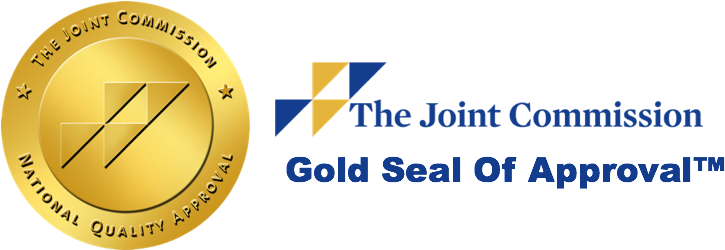Bipolar disorder (also known as manic depression) is more common than many people may think. According to the National Institute of Mental Health (NIMH), “An estimated 4.4% of U.S. adults experience bipolar disorder at some time in their lives.” Now, while that may seem like a small percentage, it represents over 14.6 million people in the United States right now. This is no insignificant number.
Manic Depression vs Bipolar Disorder
Many people get confused as to what manic depression and bipolar disorder are, as well as what differences exist between the two. To put it simply, manic depression is merely the former name of bipolar disorder. Ultimately, the only difference between manic depression and bipolar disorder is the names of the conditions used to address the same set of symptoms.
According to the National Institute of Mental Health (NIMH), “Bipolar disorder (formerly called manic-depressive illness or manic depression) is a mental illness that causes unusual shifts in a person’s mood, energy, activity levels, and concentration. These shifts can make it difficult to carry out day-to-day tasks.” The term manic depression describes the two main characteristics of bipolar disorder. However, it should also be noted that manic depression is more of a definition of bipolar I disorder than bipolar disorder in its other forms.
Understanding “Bipolar Disorder” as an Umbrella Category
Bipolar disorder is an umbrella category for several different disorders. The three primary ones are bipolar I disorder, bipolar II disorder, and cyclothymic disorder (also called cyclothymia).
There are other types of bipolar disorder. According to the peer-reviewed write-up titled Bipolar Disorder by Doctors Jain and Mitra, these include “Specified bipolar and related disorders: Bipolar-like phenomena that do not meet the criteria for BD-I, BD-II, or cyclothymic disorder due to insufficient duration or severity,” and “[u]nspecified bipolar and related disorders: Characteristic symptoms of bipolar and related disorders that cause clinically significant distress or impairment in social, occupational, or other important areas of functioning but do not meet the full criteria for any category previously mentioned.” However, the number of people these conditions affect is significantly smaller than the initial three.
What Is Bipolar I Disorder?
Bipolar I disorder is the one most closely associated with its former moniker, “manic depression.” This is because it is most notably characterized by its intense periods of mania followed by less intense periods of depression.
According to NIMH, “Bipolar I disorder is defined by manic episodes that last at least 7 days (most of the day, nearly every day) or when manic symptoms are so severe that hospital care is needed. Usually, separate depressive episodes occur as well, typically lasting at least 2 weeks. Episodes of mood disturbance with mixed features are also possible.” Bipolar II is often considered less severe, as it is defined by bouts of “hypomania” which are not as intense as manic episodes.
What Is Bipolar II Disorder?
Some people make the mistake of diminishing bipolar II disorder because outwardly it appears more controllable. This isn’t the case.
Yes, bipolar II disorder is not defined or recognized via intense manic episodes, but its depressive episodes can be significantly more severe. They also tend to be more prolonged. Bipolar II disorder would represent the “depression side” of the old label.
What Is Cyclothymia?
Another type of bipolar disorder that can get overlooked is cyclothymia. Cyclothymia is a less intense type of bipolar disorder. According to the Substance Abuse and Mental Health Services Administration (SAMHSA), “Cyclothymic Disorder: more chronic mood instability (both highs and lows) that are not as long, severe, or frequent as those experienced in bipolar I or II disorder.” It would be fair to say that cyclothymic disorder does not meet the criteria for the former label of manic depression.
However, it is important to remember that all issues of mental illness are relative to the individual. Also, it is unhelpful for that individual when their disorder is compared to the severity of other people’s disorder. Yes, cyclothymia may have less severe symptoms than bipolar I or bipolar II disorder, but to the individual, these symptoms can be highly uncomfortable and disruptive to their day-to-day lives.
Offering Whole Mind-Body Treatment at The Phoenix Recovery Center
Here at The Phoenix Recovery Center, we understand that mental health issues can affect every part of our being, which includes our mind, body, and soul. This is why we focus on whole mind-body treatment and healing at the cellular level at The Phoenix Recovery Center.
The iconic American philosopher and poet, Ralph Waldo Emerson, said, “What lies behind you and what lies in front of you, pales in comparison to what lies inside of you.” Our primary purpose is to help our clients find that person inside who has been held down by mental illness and addiction and set them free.
Bipolar disorder was formerly called “manic depression.” Today, the discussion of bipolar disorder is more nuanced as it is now known that there are many different types of bipolar disorder, including bipolar I, bipolar II, and cyclothymia. The good news is there are also many more effective ways to treat bipolar disorder than there were when it was defined as manic depression. If you think that you or a loved one may be struggling with any type of bipolar disorder or any other issues of mental illness or addiction, we can help. For more information about what bipolar disorder is and how it can best be treated, contact The Phoenix Recovery Center at (801) 438-3185.







